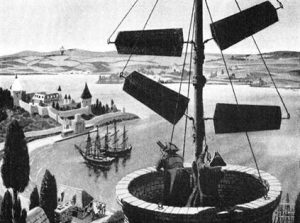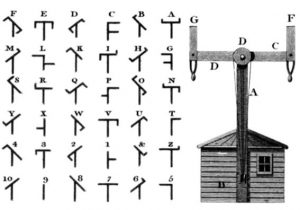Reminiscing
 My grand nephew, Jake Collett joined our family when he married my grand niece, Katy Balcerzak. Jake and Katy are perfect for each other. When they aren’t at work, they are together. It doesn’t matter what it is…errands, visiting family or friends, or just hanging out. They are a team, and that is the best thing to be in a marriage. People who really love each other always seem to be going the in the same direction. Their goals and activities all seem to be along the same lines. That’s Jake and Katy. Just looking at their faces, when they are together, you can see the love they have for each other. It’s just so awesome to watch.
My grand nephew, Jake Collett joined our family when he married my grand niece, Katy Balcerzak. Jake and Katy are perfect for each other. When they aren’t at work, they are together. It doesn’t matter what it is…errands, visiting family or friends, or just hanging out. They are a team, and that is the best thing to be in a marriage. People who really love each other always seem to be going the in the same direction. Their goals and activities all seem to be along the same lines. That’s Jake and Katy. Just looking at their faces, when they are together, you can see the love they have for each other. It’s just so awesome to watch.
Jake and Katy love all things outdoors. It doesn’t matter if its the mountain or the lake. They are there. They love going for long walks on the mountain, and taking their dogs  with them. Hiking is such a beautiful sport, and anyone who does it, knows the peace and serenity of the outdoors. You can’t spend much time out there, and not be hooked for life. Exploring through the trees, finding out what is just around the bend in the trail…that’s what it’s all about. Jake and Katy get that. The mountains and trails are the perfect place to unplug from life and reconnect with your spouse. And that’s what they do…often.
with them. Hiking is such a beautiful sport, and anyone who does it, knows the peace and serenity of the outdoors. You can’t spend much time out there, and not be hooked for life. Exploring through the trees, finding out what is just around the bend in the trail…that’s what it’s all about. Jake and Katy get that. The mountains and trails are the perfect place to unplug from life and reconnect with your spouse. And that’s what they do…often.
 Jake and Katy also love to ride four wheelers. That way they can get even further from the hustle and bustle of their busy lives. There is nothing like heading out into the trees far from the highway and the crowds. These days so many people don’t take time to get back to nature, and I think that is sad. Jake and Katy take lots of pictures of their adventures, and their puppies, Bubba and Sheiba. I like that they post their pictures so everyone else can share in their peaceful times together. I know that they are going to have such a wonderful life, and I’m so happy that they have each other, and that we have been blessed with the addition of Jake to our family. Today is Jake’s birthday. Happy birthday Jake!! Have a great day!! We love you!!
Jake and Katy also love to ride four wheelers. That way they can get even further from the hustle and bustle of their busy lives. There is nothing like heading out into the trees far from the highway and the crowds. These days so many people don’t take time to get back to nature, and I think that is sad. Jake and Katy take lots of pictures of their adventures, and their puppies, Bubba and Sheiba. I like that they post their pictures so everyone else can share in their peaceful times together. I know that they are going to have such a wonderful life, and I’m so happy that they have each other, and that we have been blessed with the addition of Jake to our family. Today is Jake’s birthday. Happy birthday Jake!! Have a great day!! We love you!!
 When a girl turns nine, things really start to change. For my grand niece, Kaytlyn Griffith, that means that she is on the big kid side of the school. That brings back so many memories for me. I hadn’t thought about the big kid side of the school in years. I think I almost thought it was only something that was a part of the school I went to, so to hear that it is still such a big deal is really amazing. It takes me back in time. Kaytlyn really likes school, and does especially well in math and reading. This year she is learning cursive…more things that being on the big kid side of the school is all about. It’s almost like a secret club that kids get to join when they enter the third grade.
When a girl turns nine, things really start to change. For my grand niece, Kaytlyn Griffith, that means that she is on the big kid side of the school. That brings back so many memories for me. I hadn’t thought about the big kid side of the school in years. I think I almost thought it was only something that was a part of the school I went to, so to hear that it is still such a big deal is really amazing. It takes me back in time. Kaytlyn really likes school, and does especially well in math and reading. This year she is learning cursive…more things that being on the big kid side of the school is all about. It’s almost like a secret club that kids get to join when they enter the third grade.
In recent years, a new phenomenon has come into being. Or maybe it was a thing before and has now made a comeback, but when I was a kid and when I was raising my kids, there was no such thing as a Daddy-Daughter Dance. I kind of wish there had been, because it is really a cool way for dads to bond with their daughters. Kaytlyn really wanted her daddy, Josh Griffith to take her and her sister, Jala Satterwhite, last year, but something came up and he couldn’t go. This year Jala wasn’t interested, but Josh and Kaytlyn went to the dance, and I 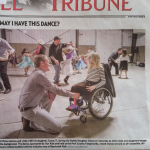 think Kaytlyn looked just like Cinderella with her Prince Charming. The coolest part of the whole thing was that their picture turned up on the front page of the newspaper. I guess they thought the same thing I did about this royal couple. For Kaytlyn, being on the front page of the paper is the epitome of fame…and she has arrived.
think Kaytlyn looked just like Cinderella with her Prince Charming. The coolest part of the whole thing was that their picture turned up on the front page of the newspaper. I guess they thought the same thing I did about this royal couple. For Kaytlyn, being on the front page of the paper is the epitome of fame…and she has arrived.
I imagine that the reason she feels that way is that one of the commercial loan officers at the First Bank of Wyoming in Powell, Becky Duran is on billboards all over town. Everyone knows her name, and to Kaytlyn, that makes her that most awesome celebrity ever. Sometimes she is even in the paper too. Every time they pass a billboard with her name on it, Kaytlyn shouts, “There’s Becky Duran!” Kaytlyn has loved this celebrity for over a year, and her mom, Susan decided that it was time they met. She made an appointment with Becky, and had her mom, Debbie Cook take the girls in. They were both very excited. She gave them bags of promotional bank  items and they got to have hot chocolate with her. It was a day to remember for both of the girls, and how sweet of Becky to make it such a wonderful memory for them to cherish.
items and they got to have hot chocolate with her. It was a day to remember for both of the girls, and how sweet of Becky to make it such a wonderful memory for them to cherish.
Living in the country has it’s privileges…especially when it comes to pets. Kaytlyn loves her pets. The family has 4 cats and 3 dogs, which might seem like a lot to city dwellers, but in the country, you can do that. Two kittens and a puppy were added to the family in the same weekend. They were all 8 weeks old in November. Since then, it has been pretty crazy around their house. The puppy is named Trump, and I love that. A couple weeks later they found out that he is deaf, but he is the sweetest dog, and well behaved, which is uncommon for a dog that cannot hear commands. Kaytlyn has nicknamed him Truck. Today is Kaytlyn’s 9th birthday. Happy birthday Kaytlyn!! Have a great day!! We love you!!
 These days, my husband, Bob Schulenberg and I, and a few other people we know, have become an anomaly. Our marriage has weathered the test of time, and we are well on our way to growing old together. I say that not so much with a sense of pride, although I am proud of my marriage to Bob, and happy that we are still together, but with almost a sense of awe. Many people who everyone just knew would make it didn’t, so why did we make it? I have never been sure, except that we usually didn’t let things bother us very much. The old saying, “Don’t sweat the small stuff” comes to mind, as does “In a hundred years, who’s gonna care.” Those sayings remind me to focus on what is important…us. Things will come and go, storms will dissipate, seasons will pass, but as long as we are on this journey together, we are going to be blessed.
These days, my husband, Bob Schulenberg and I, and a few other people we know, have become an anomaly. Our marriage has weathered the test of time, and we are well on our way to growing old together. I say that not so much with a sense of pride, although I am proud of my marriage to Bob, and happy that we are still together, but with almost a sense of awe. Many people who everyone just knew would make it didn’t, so why did we make it? I have never been sure, except that we usually didn’t let things bother us very much. The old saying, “Don’t sweat the small stuff” comes to mind, as does “In a hundred years, who’s gonna care.” Those sayings remind me to focus on what is important…us. Things will come and go, storms will dissipate, seasons will pass, but as long as we are on this journey together, we are going to be blessed.

When I met Bob, I was a senior in high school. I didn’t know what love was. I just thought he was cute. Little did I know that from that day forward, he would always be a wonderful part of my life. Now, I can’t even begin to imagine my life without him. We are so connected…so well suited for each other. My mom, Collene Spencer commented one time that we had even begun to look alike…taking on the same facial expressions and mannerisms. I thought that was a strange comment at the time…at lease twenty years ago, when she said it, but she was right. As I watch us in our daily life, we can finish each other’s sentences, crack the same jokes, and think alike on world issues…all of them!! How amazing is that? Bob knows what to do or say in any situation, to bring me comfort. The Bible says that in marriage, the two become one. That is so evident in our lives, and we couldn’t ask for more. Ours is a beautiful life. We are so very blessed.
lives, and we couldn’t ask for more. Ours is a beautiful life. We are so very blessed.
It’s not that we are spending lots of money, or traveling to exotic places, but we might someday. It’s just that we like doing the same things. I don’t think it matters where you go, as long as you go together…at least most of the time. More important than money and things though, is loving the person you have chosen to be your life partner, and that is what we have done. We just couldn’t imagine being with anyone else. There is no big secret, or magic formula, we just love and respect each other, and we love just living our life. Happy 42nd anniversary to the most wonderful husband ever!! Forty two years and still going strong. I love you Bob…forever and ever!!
 Leap Day Babies, by definition are numerically challenged…not age challenged or mathematically challenged, although both of those things come into play…simply numerically challenged. Things just never quite add up for them. They start off behind the rest of the kids born that year, because when that first birthday rolls around, the other kids turn one, but a Leap Day Baby only turns ¼. It’s because the 29th of February only happens every four years. I call those other three years nano-birthdays, because the birthday arrives somewhere between 11:59:59pm and 12:00am. It is a nano-second in time, and that is when that missing birthday occurs. Even their younger siblings pass Leap Day Babies up. The Leap Day Baby is pretty good at fractions, however, because after their first year of life, they are ¼. After their second year of life, they are ½. And after their third year of life, they are ¾. It isn’t until their fourth year of life that the Leap Day Baby turns 1.
Leap Day Babies, by definition are numerically challenged…not age challenged or mathematically challenged, although both of those things come into play…simply numerically challenged. Things just never quite add up for them. They start off behind the rest of the kids born that year, because when that first birthday rolls around, the other kids turn one, but a Leap Day Baby only turns ¼. It’s because the 29th of February only happens every four years. I call those other three years nano-birthdays, because the birthday arrives somewhere between 11:59:59pm and 12:00am. It is a nano-second in time, and that is when that missing birthday occurs. Even their younger siblings pass Leap Day Babies up. The Leap Day Baby is pretty good at fractions, however, because after their first year of life, they are ¼. After their second year of life, they are ½. And after their third year of life, they are ¾. It isn’t until their fourth year of life that the Leap Day Baby turns 1.  This is a fact of life that my granddaughter, Shai Royce has had to live with since her birth 21 years ago. She wasn’t always sure she liked it, because the boys, her brother, Caalab Royce, and cousins, Chris and Josh Petersen loved to tease her by saying, “I’m older than you” and it was true in every way except the number of years each had spent on the earth.
This is a fact of life that my granddaughter, Shai Royce has had to live with since her birth 21 years ago. She wasn’t always sure she liked it, because the boys, her brother, Caalab Royce, and cousins, Chris and Josh Petersen loved to tease her by saying, “I’m older than you” and it was true in every way except the number of years each had spent on the earth.
Nevertheless, Leap has it’s privileges. While the boys had to wait until they turned 16 to get their driver’s license, Shai got to get hers at the age of 4. She got to graduate from high school at the age of 4½. One of the biggest privileges Shai has as a Leap Day Baby is the fact that she can celebrate her nano-birthdays on either the 28th of February or the 1st of March…or both. Her grandpa and I have our anniversary on March 1st, so we liked sharing our anniversary with her on those nano-years, but often  it seems that Shai likes to celebrate it on the 28th of February. That has been a distinct advantage for Shai and every other Leap Day Baby…the ability to honestly have an early birthday. This birthday has been a particularly cool one for Shai…especially in the early birthday department, because how many kids say that they actually got to legally drink the day before their 21st birthday? Only the Leap Day Baby. And since the government doesn’t even know what to do about the matter exactly, they even made it legal for her to cheat the system and start legally drinking the day before her birthday.
it seems that Shai likes to celebrate it on the 28th of February. That has been a distinct advantage for Shai and every other Leap Day Baby…the ability to honestly have an early birthday. This birthday has been a particularly cool one for Shai…especially in the early birthday department, because how many kids say that they actually got to legally drink the day before their 21st birthday? Only the Leap Day Baby. And since the government doesn’t even know what to do about the matter exactly, they even made it legal for her to cheat the system and start legally drinking the day before her birthday.
I guess that while Leap Day Babies only get a birthday once every four years, Leap really does have it’s privileges. For now, Shai might like being older sooner, but some day she will seriously appreciate the fact that she only ages every four years. Today is Shai’s Nano-21st-Birthday. Happy birthday Shai!! Have a great day!! We love you!!
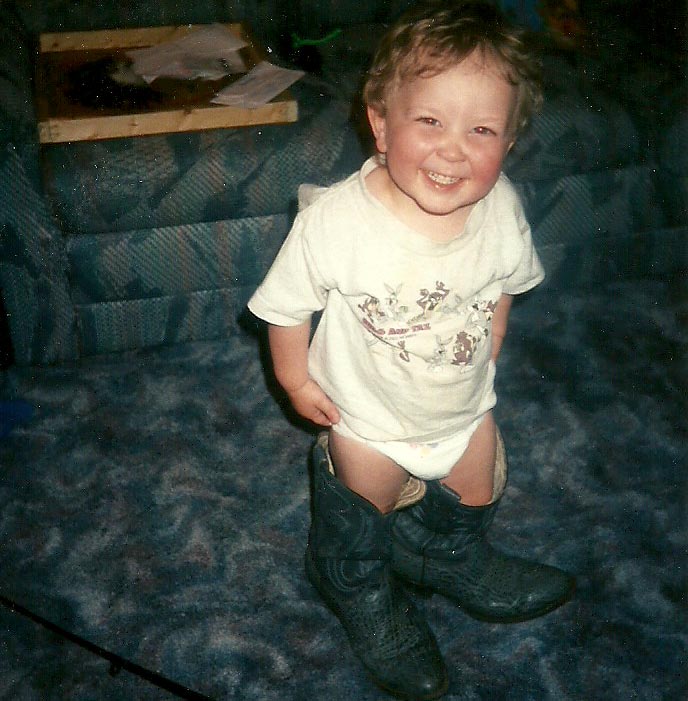 Sometimes the age your kids or grandkids are turning on their birthday has a tendency to shock you. That is where I am on this, my oldest grandchild, Chris Petersen’s 21st birthday. It just seems completely impossible that he could be 21 years old today. Chris has come so far. He finished college last year, and he is busy setting himself up in his chosen career. He has a degree in Culinary Arts, and his work is beautiful. I know that Chris will go far in this field, but I suspect that it will happen down the road a bit, when he is able to open his own restaurant. For now, he is busy getting some experience in all aspects of the restaurant business so that he will know what things that make a restaurant successful and what things make one fail.
Sometimes the age your kids or grandkids are turning on their birthday has a tendency to shock you. That is where I am on this, my oldest grandchild, Chris Petersen’s 21st birthday. It just seems completely impossible that he could be 21 years old today. Chris has come so far. He finished college last year, and he is busy setting himself up in his chosen career. He has a degree in Culinary Arts, and his work is beautiful. I know that Chris will go far in this field, but I suspect that it will happen down the road a bit, when he is able to open his own restaurant. For now, he is busy getting some experience in all aspects of the restaurant business so that he will know what things that make a restaurant successful and what things make one fail.
A few months ago, Chris moved out of his parents home, and into an apartment of his 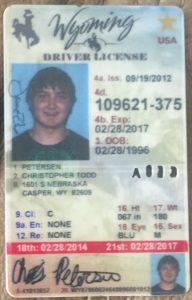 own. He is enjoying his new found independence. Of course, it wasn’t like he wasn’t independent before, but when you live under your parents roof, there are still certain rules you have to abide by. By the same token, when you live on your own, you don’t have anyone else’s rules to follow, but you are the one responsible for your own bills and such too, so I guess it’s a trade off. Still, I don’t know of a single kid who has moved out on their own, who didn’t think it was worth the trade off in the end. Chris is no different than any other kid, moving out for the first time. He is adjusting to new things, and he really misses his family, especially hanging out with his little brother, Josh Petersen. I suppose that is why Josh has stayed the night several times. Brothers just need to hang out.
own. He is enjoying his new found independence. Of course, it wasn’t like he wasn’t independent before, but when you live under your parents roof, there are still certain rules you have to abide by. By the same token, when you live on your own, you don’t have anyone else’s rules to follow, but you are the one responsible for your own bills and such too, so I guess it’s a trade off. Still, I don’t know of a single kid who has moved out on their own, who didn’t think it was worth the trade off in the end. Chris is no different than any other kid, moving out for the first time. He is adjusting to new things, and he really misses his family, especially hanging out with his little brother, Josh Petersen. I suppose that is why Josh has stayed the night several times. Brothers just need to hang out.
All that change is one thing, but the biggest change for Chris and every other kid turning 21 is the legal drinking age. Gone are the days of trying to con his parents into letting him have a sip, trying to find someone  to buy beer for you, or going to a party and hoping you don’t get caught. Now I don’t know if Chris ever did any of those things or not, and as the grandma, I can feign innocence, and assume he would never do such a thing. It is my right. Nevertheless, today, Chris is of legal age to have a drink if he wants to. That is sure going to take some getting used to. He is still too young in my mind, so to see him drinking a beer with the guys will be one of those shocking moments for sure!! Nevertheless, that day has come. Today is my grandson, Chris Petersen’s 21st birthday. Happy birthday Chris!! Have a great day, and make sure you always have a designated driver!! We love you!!
to buy beer for you, or going to a party and hoping you don’t get caught. Now I don’t know if Chris ever did any of those things or not, and as the grandma, I can feign innocence, and assume he would never do such a thing. It is my right. Nevertheless, today, Chris is of legal age to have a drink if he wants to. That is sure going to take some getting used to. He is still too young in my mind, so to see him drinking a beer with the guys will be one of those shocking moments for sure!! Nevertheless, that day has come. Today is my grandson, Chris Petersen’s 21st birthday. Happy birthday Chris!! Have a great day, and make sure you always have a designated driver!! We love you!!

 When a person has Alzheimer’s Disease, everyone tends to feel sorry for them…or so they think. In reality, we don’t feel as sorry for the patient as we do for ourselves. The patient doesn’t seem to know that they are forgetting things, at least not after they are a little way into the progression of the disease. In fact, they truly live in an alternate reality, and sometimes it is a much nicer reality than we live in. If someone in their family has passed away, one of the others becomes that person on occasion. That’s how it is with my mother-in-law, Joann Schulenberg. Her husband, who is my father-in-law, Walt Schulenberg passed away on May 5, 2013, and yet, she talked to him night before last. Of course, she was talking to her son, my husband, Bob Schulenberg, but he like the rest of her family has adapted to her altered reality, so that night Bob became Walt…if only for a minute, because that is how long it takes for that reality to pass and he becomes Bob again. I suppose people might think that strange, but it is actually kindness. She doesn’t have to grieve. Her deceased loved ones are never gone from her. They are there in the people around her, and she is happy.
When a person has Alzheimer’s Disease, everyone tends to feel sorry for them…or so they think. In reality, we don’t feel as sorry for the patient as we do for ourselves. The patient doesn’t seem to know that they are forgetting things, at least not after they are a little way into the progression of the disease. In fact, they truly live in an alternate reality, and sometimes it is a much nicer reality than we live in. If someone in their family has passed away, one of the others becomes that person on occasion. That’s how it is with my mother-in-law, Joann Schulenberg. Her husband, who is my father-in-law, Walt Schulenberg passed away on May 5, 2013, and yet, she talked to him night before last. Of course, she was talking to her son, my husband, Bob Schulenberg, but he like the rest of her family has adapted to her altered reality, so that night Bob became Walt…if only for a minute, because that is how long it takes for that reality to pass and he becomes Bob again. I suppose people might think that strange, but it is actually kindness. She doesn’t have to grieve. Her deceased loved ones are never gone from her. They are there in the people around her, and she is happy.
My mother-in-law does not notice the passage of time, and if she does, it sometimes seems longer than it was. She might tell you that she hasn’t seen you in a year, when in reality it was the day before. Or she might say that you were just here, when you have been out of town for a week. Time is based on her own perception of it at the time, and that’s ok with me. As long as she’s happy, I’m happy.
As her birthday approached this year, I’ve been telling her that February is almost over. She doesn’t always think that is possible, and I can relate to that. Time really does fly by. So, on Saturday when I told her that her birthday was coming, she said it couldn’t be, because we hadn’t had Christmas yet. Now I would love to tell you that I had a quick come back for that one, but sometimes she catches me off guard. I told her Christmas had passed, and it was February. Thankfully she accepted that answer and the conversation moved forward. Yesterday, as we were waiting for the bus to take her back to the nursing home after he check up with the 
 doctor, I asked her what today was going to be. She didn’t know, so I told her that it was February 28th. She perked up. I asked her what that day was, and she said that it was her birthday. I was pleased at that, so I thought I would take it one step further. I asked her how old she was going to be. She didn’t know, so I suggested that she take a guess. Well, I guess that the moment of clarity was over, because she said, “I’m 50 something.” She was only 36 years off, but it doesn’t really matter anyway, because you’re only as old as you feel…right? Happy birthday Mom!! Have a great day!! We love you!!
doctor, I asked her what today was going to be. She didn’t know, so I told her that it was February 28th. She perked up. I asked her what that day was, and she said that it was her birthday. I was pleased at that, so I thought I would take it one step further. I asked her how old she was going to be. She didn’t know, so I suggested that she take a guess. Well, I guess that the moment of clarity was over, because she said, “I’m 50 something.” She was only 36 years off, but it doesn’t really matter anyway, because you’re only as old as you feel…right? Happy birthday Mom!! Have a great day!! We love you!!

 Coal mining in modern times is mostly strip mining. Scrapers systematically strip levels of earth away, and load the ore on Unit Rigs to be taken for processing. For the most part, this is a very safe way to mine coal. Mining wasn’t always that way, and in areas where underground mining is the normal mining style, accidents are bound to happen. Coal dust can be deadly. It is a fine powdered form of coal, which is created by crushing, grinding, or pulverizing the coal. Because of the brittle nature of coal, coal dust can be created during mining, transportation, or by mechanically handling coal. Grinding coal to dust before combusting it improves the speed and efficiency of burning and makes the coal easier to handle. However, coal dust is hazardous to workers if it is suspended in air outside of the controlled environment of grinding and combustion equipment. It poses the acute hazard of forming an explosive mixture in air and the chronic hazard of causing pulmonary illness in people who inhale excessive quantities of it. Coal dust in a confined space that forms an explosive mixture, can cause a mine cave in.
Coal mining in modern times is mostly strip mining. Scrapers systematically strip levels of earth away, and load the ore on Unit Rigs to be taken for processing. For the most part, this is a very safe way to mine coal. Mining wasn’t always that way, and in areas where underground mining is the normal mining style, accidents are bound to happen. Coal dust can be deadly. It is a fine powdered form of coal, which is created by crushing, grinding, or pulverizing the coal. Because of the brittle nature of coal, coal dust can be created during mining, transportation, or by mechanically handling coal. Grinding coal to dust before combusting it improves the speed and efficiency of burning and makes the coal easier to handle. However, coal dust is hazardous to workers if it is suspended in air outside of the controlled environment of grinding and combustion equipment. It poses the acute hazard of forming an explosive mixture in air and the chronic hazard of causing pulmonary illness in people who inhale excessive quantities of it. Coal dust in a confined space that forms an explosive mixture, can cause a mine cave in.
On February 27, 1943, just such a deadly combination occurred and the resulting explosion at the Montana Coal and Iron Company mine killed 74 workers. It would become the worst mining disaster in Montana’s history, and the 43rd worst in the nation. The small towns of Washoe and Bearcreek, Montana, consisted almost entirely of mine workers and their families. Most of the men worked at Smith Mine #3 for the Montana Coal and Iron Company. Saturday morning, February 27, found 77 men working in the mine. Then, at 9:30am, a huge explosion rang out. The people of Washoe and Bearcreek heard the roar and then the long, wailing siren that followed. The exact cause of the explosion is not known, though some of the company’s miners claimed methane gas had built up in some abandoned shafts and was ignited after a cave-in. The two towns are virtually ghost towns now, with Bearcreek being the only one with people living there…a total of 79 to be exact.
Inside the mine, smoke was seen pouring from the entrance…the first indication of trouble. “There’s something wrong down here, I’m getting out,” the hoist operator called up. He and two nearby miners were the last men to leave the mine alive. Rescue crews came from as far away as Butte and Cascade county, and worked around the clock in six hour shifts to clear debris and search for possible survivors. There were none. The night of March 4, workers reached the first bodies. More followed until the toll mounted to 74. Some died as the result 
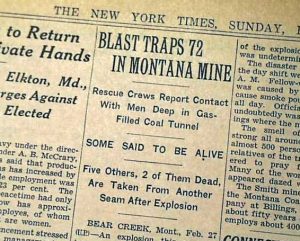 of a violent explosion in Number 3 vein, the remainder as a result of the deadly methane gasses released by the blast. Virtually every household in Washoe and Bearcreek was touched by this tragedy. All of the bodies were removed from the mine. There is a highway plaque near the mouth of the mine, which was never reopened, and there are memorials in the cemeteries in Bearcreek and nearby Red Lodge, the county seat for Carbon County.
of a violent explosion in Number 3 vein, the remainder as a result of the deadly methane gasses released by the blast. Virtually every household in Washoe and Bearcreek was touched by this tragedy. All of the bodies were removed from the mine. There is a highway plaque near the mouth of the mine, which was never reopened, and there are memorials in the cemeteries in Bearcreek and nearby Red Lodge, the county seat for Carbon County.
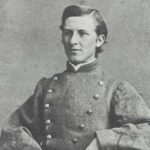
 During the Civil War, the fighting was much different than these days…not just in the weapons used, but in a much bigger way. To send men out to battle in the winter was just too risky. Impassable, muddy roads and severe weather impeded active service in the wintertime. In fact, during the Civil War, the soldiers only spent a few days each year in actual combat. The rest of the time was spent getting from one battle to another, and wintering someplace because of bad weather. Even the rainy seasons caused problems, because rain brings muddy roads, and you can’t move heavy cannons on muddy roads. They get stuck. The soldiers tended to have a lot of time on their hands in the winter, and they couldn’t just go home either. In reality, disease caused more soldiers’ deaths than battle did.
During the Civil War, the fighting was much different than these days…not just in the weapons used, but in a much bigger way. To send men out to battle in the winter was just too risky. Impassable, muddy roads and severe weather impeded active service in the wintertime. In fact, during the Civil War, the soldiers only spent a few days each year in actual combat. The rest of the time was spent getting from one battle to another, and wintering someplace because of bad weather. Even the rainy seasons caused problems, because rain brings muddy roads, and you can’t move heavy cannons on muddy roads. They get stuck. The soldiers tended to have a lot of time on their hands in the winter, and they couldn’t just go home either. In reality, disease caused more soldiers’ deaths than battle did.
The soldiers sometimes kept journals of their time, which is where so much of the information we have about their time, came from. One such soldier was Elisha Hunt Rhodes. The winter months were monotonous for the soldiers. There was really nothing to do, but they needed to be kept in shape and at the ready, so the solution became days spent drilling. I’m sure that the boredom caused tempers to flair at times too, but the down time allowed the soldiers some time to bond and have a little bit of fun, as well. Nevertheless, the main objective for the winter months was to stay warm and busy, because their survival depended on it.
Rhodes was in the Army for four years, and he kept a journal for all of that time. He was a member of the 2nd Rhode Island Rhodes and fought in every battle from the First Bull Run to Appomattox. He rose from the rank of private to the rank of colonel in four years. According to Rhodes, the winter months were pretty quiet for the soldiers. They didn’t fight many battles, and so the months were spent drilling or smoking and sleeping. Some of the troops gambled and others drank or even visited the prostitutes who hung out around the camps. Believe it or not, the soldiers actually welcomed Picket Duty, which is when soldiers are posted on guard ahead of a main force. Pickets included about 40 or 50 men each. Several pickets would form a rough line in front of the main army’s camp. In case of enemy attack, the pickets usually would have time to warn the rest of the force. Picket Duty became a welcome break from the day to day monotony, because in Rhoades words, “One day is much like another at headquarters.”
Rhodes spent most of his winter months in or near Washington DC, giving him more diversions than some soldiers in the Civil War, who were in more remote locations. On one such trip into town came on February 26, 1862, he took the opportunity to hear Senator Henry Wilson from Massachusetts speak on expelling disloyal members of Congress. After listening to the speech, Rhodes and his friend Isaac Cooper attended a fair at a 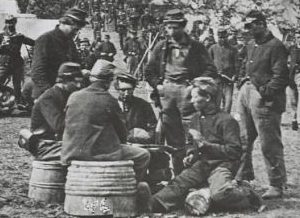
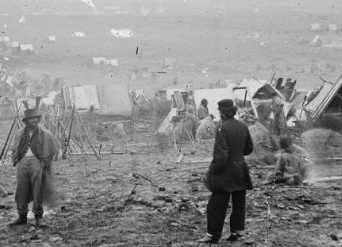 Methodist church and met two young women, who the soldiers escorted home. Like other soldiers, Rhodes welcomed the departure from winter quarters and an end to the monotony. “Our turn has come,” he wrote when his unit began moving south to Richmond, Virginia,in 1864. His winter break was over, and he would find himself back in battle again. Rhodes would survive the Civil War and after a long life, passed away on January 14, 1917 at 75.
Methodist church and met two young women, who the soldiers escorted home. Like other soldiers, Rhodes welcomed the departure from winter quarters and an end to the monotony. “Our turn has come,” he wrote when his unit began moving south to Richmond, Virginia,in 1864. His winter break was over, and he would find himself back in battle again. Rhodes would survive the Civil War and after a long life, passed away on January 14, 1917 at 75.
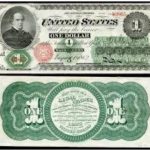 During the Civil War, money was made out of silver and gold. People would not have trusted any other form of money, but having enough silver and gold to make that money wasn’t always easy. The Northern states needed money, and they knew they had to make it, but Congress and others were concerned for the economy. If the government made money without silver or gold to back it, wouldn’t it eventually doom the economy? Most of us would call that counterfeit money, and yet our government is still doing this at times, more than we want to think about. Nevertheless, if you are part of the government, or even just someone who understands how such money can effect the economy, you might very likely be against something like the Legal Tender Act that was passed by the US Congress on this day, February 25, 1862.
During the Civil War, money was made out of silver and gold. People would not have trusted any other form of money, but having enough silver and gold to make that money wasn’t always easy. The Northern states needed money, and they knew they had to make it, but Congress and others were concerned for the economy. If the government made money without silver or gold to back it, wouldn’t it eventually doom the economy? Most of us would call that counterfeit money, and yet our government is still doing this at times, more than we want to think about. Nevertheless, if you are part of the government, or even just someone who understands how such money can effect the economy, you might very likely be against something like the Legal Tender Act that was passed by the US Congress on this day, February 25, 1862.
This was a huge step. Prior to this time, the money was real money. It needed no proof that its value was real,  the people using it could see that for themselves. The United States didn’t have money that was basically an I.O.U. before that time. The problem was that they also had a war going on that cost a lot of money, and with people fighting the war, there were a lot less people to go out and look for gold and mine silver. It was a big problem, but the Civil War was extremely costly, and it had to be financed. The government had to face the fact that the supply of gold and silver was depleted. The Legal Tender Act was not a decision they came to lightly. They discussed every other option, including bonds. Once they settled on paper money, the Union government printed 150 million dollars in paper money…called greenbacks. The Confederate government had been printing money since the beginning of the war, which proved to be folly in the end, but I guess if the south had won, it would have gone the other way. Nevertheless, the bankers and financial experts predicted doom immediately, and many legislators worried that the money might collapse the infrastructure.
the people using it could see that for themselves. The United States didn’t have money that was basically an I.O.U. before that time. The problem was that they also had a war going on that cost a lot of money, and with people fighting the war, there were a lot less people to go out and look for gold and mine silver. It was a big problem, but the Civil War was extremely costly, and it had to be financed. The government had to face the fact that the supply of gold and silver was depleted. The Legal Tender Act was not a decision they came to lightly. They discussed every other option, including bonds. Once they settled on paper money, the Union government printed 150 million dollars in paper money…called greenbacks. The Confederate government had been printing money since the beginning of the war, which proved to be folly in the end, but I guess if the south had won, it would have gone the other way. Nevertheless, the bankers and financial experts predicted doom immediately, and many legislators worried that the money might collapse the infrastructure.
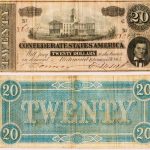
The greenbacks did not sink the economy. In fact, they worked very well. The government was able to pay its bills and, by increasing the money in circulation, the Northern economy actually improved. The greenbacks were legal tender, which meant that creditors had to accept them at face value. Life went on, but there were repercussions from the new money. In 1862, Congress was forced to pass an income tax and steep excise taxes, designed to cool the inflationary pressures created by the greenbacks. In 1863, another legal tender act was passed, and by the war’s end nearly half a billion dollars in greenbacks had been issued. The Legal Tender Act laid the foundation for the creation of a permanent currency in the decades after the Civil War.
